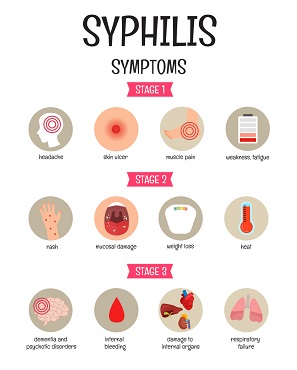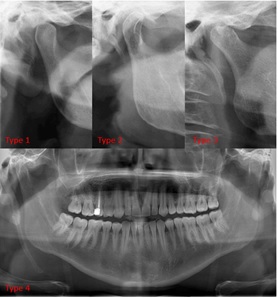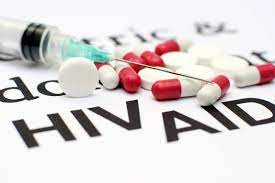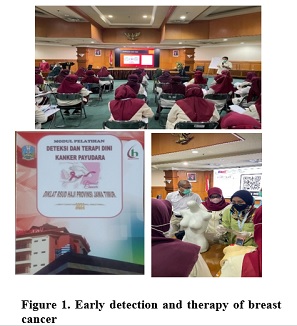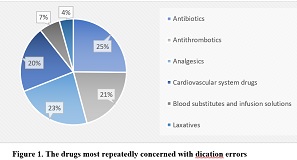Pharmacies During COVID-19: Implementing Protective Measures For Everyone
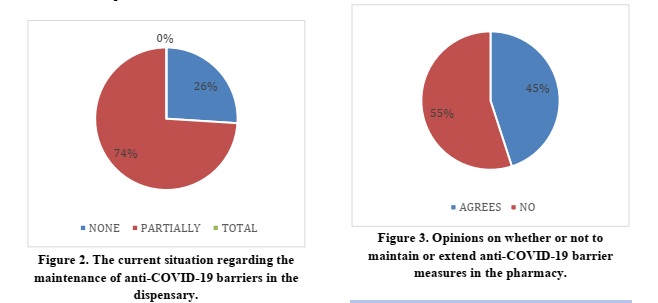
Downloads
The COVID-19 pandemic prompted health authorities to adopt measures to protect the population by curbing the spread of the virus. Given that SARS-CoV-2 is primarily transmitted through close contact with infected droplets, aerosols, or contaminated surfaces, the measures implemented include social distancing, adherence to hand hygiene rules, and vaccination of the population. To assess compliance with anti-COVID-19 barrier measures implemented by dispensing pharmacists after the pandemic, we conducted a descriptive cross-sectional study. The study included 117 dispensing pharmacists, 74% of whom practiced in urban areas. The results of our research show that anti-COVID-19 barrier measures in pharmacies are partially maintained at 74%. The use of glass barriers over countertops is at the top of the list, at 71%, followed by hand disinfection with hydroalcoholic gel after each user visit, at 27%. Other measures, such as the wearing of masks, the presence of a hydroalcoholic gel dispenser at the entrance, limiting the number of users in the pharmacy, as well as the indication of one-way traffic and physical distance lines on the floor, are applied at rates of 1%, 6%, 3% and 4% respectively. Our study also revealed that 45% of dispensing pharmacists support maintaining or extending anti-COVID-19 barrier measures in their pharmacies. It is essential to note that although working in a pharmacy requires close interaction with users, maintaining distancing and hand hygiene measures remains crucial for reducing the risk of infectious disease transmission, thereby promoting a safe and healthy environment for both pharmacy staff and users.
Beggar K, Ghazali A. Le comportement préventif des Marocains durant la crise pandémique de Covid-19: à la maison, au marché et au travail [Preventive of Moroccans during the COVID-19 pandemic crisis: at home, at the market and at work]. Soc Sci Inf. 2023;62(2):203-216. DOI: 10.1177/05390184231186034
Salian VS, Wright JA, Vedell PT, et al. COVID-19 transmission, current treatment, and future therapeutic strategies. Mol Pharm. 2021;18(3):754-771. DOI: 10.1021/acs.molpharmaceut.0c00608
Makita-Ikouaya E. Le Gabon face à la Covid-19: mesures sanitaires et conséquences socio-économiques. Rev Rhin Supér [Gabon and COVID-19: Health Measures and Socio-Economic Consequences] . 2020;(2):97-116. DOI: 10.57086/rrs.140
Gorfti YJ. Rôle du pharmacien d’officine dans la pandémie COVID-19 [Role of the Community Pharmacist in the COVID-19 Pandemic]. Published online 2022.Faculté de Médecine et de Pharmacie, Rabat - Thèse de pharmacie. https://toubkal.imist.ma/handle/123456789/19229
Yassine EB. L’engagement du pharmacien d’officine face à la COVID-19; enquête auprès des officines [The Commitment of the Community Pharmacist in The Face of COVID-19, Survey of Pharmacies]. Published online 2021. https://toubkal.imist.ma/bitstream/handle/123456789/19167/P0882021.pdf?sequence=1
Messin PA. Les Nouvelles Missions Du Pharmacien d’officine: État Des Lieux, Perspectives, Regards Croisés Entre Professionnels de Santé [The New Missions of The Community Pharmacist: Current Situation, Perspective, Shared Perspectives Between Health Professionals]. 2020; https://dumas.ccsd.cnrs.fr/dumas-03539210v1
Badran I, Slimano F, Depaquit J. Regards croisés sur la formation du pharmacien d’officine: Le point de vue des pharmaciens d’officine, des enseignants et des étudiants en pharmacie [Perspectives on the training of the pharmacist among pharmacists, academics and pharmacy students: A cross-sectional study]. In: Vol 78. Elsevier; 2020:242-251. DOI: 10.1016/j.pharma.2020.02.003
Utami PR, Sholikhah S, Putri AK, Octavia DR, Rahmawati E. Pharmacists’ Efforts in Community Pharmacy to Achieve Health Protocol Compliance During the Covid-19 Pandemic in Lamongan. Str J Ilm Kesehat. 2021;10(1):310-317. https://www.sjik.org/index.php/sjik/article/view/628
Giua C, Paoletti G, Minerba L, et al. Community pharmacist’s professional adaptation amid Covid-19 emergency: a national survey on Italian pharmacists. Int J Clin Pharm. 2021;43:708-715. DOI: 10.1007/s11096-020-01228-5
Itani R, Karout S, Khojah HM, et al. Community pharmacists’ preparedness and responses to COVID‐19 pandemic: A multinational study. Int J Clin Pract. 2021;75(9):e14421. DOI: 10.1111/ijcp.14421
Jarab AS, Al-Qerem W, Mukattash TL. Community pharmacists’ willingness and barriers to provide vaccination during COVID-19 pandemic in Jordan. Hum Vaccin Immunother. 2022 Jan 31;18(1):2016009. doi: 10.1080/21645515.2021.2016009
Hundertmark ME, Waring SC, Stenehjem DD, et al. Pharmacist’s attitudes and knowledge of pharmacogenomics and the factors that may predict future engagement. Pharm Pract Granada. 2020;18(3). DOI: 10.18549/PharmPract.2020.3.2008
Amaeze OU, Akinola AA, Aiyeolemi AA, Lawal FO, Ijomone OR, Mbata UA. Community Pharmacists’ Services during the COVID-19 Pandemic: A Case Study of Lagos State, Nigeria. J Res Pharm Pract. 2022;11(1):25-32. DOI: 10.4103/jrpp.jrpp_5_22
Patterson SM, Cadogan C, Barry HE, Bennett KE, Hughes C. Cross-sectional questionnaire study of the experiences of community pharmacists in Northern Ireland during the early phases of the COVID-19 pandemic: preparation, experience and response. BMJ Open. 2022;12(9):e064545. DOI: 10.1136/bmjopen-2022-064545
Nguyen HTT, Dinh DX, Nguyen VM. Knowledge, attitude and practices of community pharmacists regarding COVID-19: A paper-based survey in Vietnam. PLoS One. 2021;16(7):e0255420. DOI: 10.1371/journal.pone.0255420
Okuyan B, Bektay MY, Kingir ZB, Save D, Sancar M. Community pharmacy cognitive services during the COVID‐19 pandemic: A descriptive study of practices, precautions taken, perceived enablers and barriers and burnout. Int J Clin Pract. 2021;75(12):e14834. DOI: 10.1111/ijcp.14834
Al-Daghastani T, Tadros O, Arabiyat S, Jaber D, AlSalamat H. Pharmacists’ perception of the coronavirus pandemic (COVID-19) in Jordan: a cross-sectional study. Int J Environ Res Public Health. 2021;18(21):11541. DOI: 10.3390/ijerph182111541
Kambayashi D, Manabe T, Hirohara M. Adaptations in the role of pharmacists under the conditions of the COVID-19 pandemic: a systematic review and meta-analysis. BMC Health Serv Res. 2023;23(1):72. DOI: 10.1186/s12913-023-09071-w
Elsayed AA, Darwish SF, Zewail MB, Mohammed M, Saeed H, Rabea H. Antibiotic misuse and compliance with infection control measures during COVID‐19 pandemic in community pharmacies in Egypt. Int J Clin Pract. 2021;75(6):e14081. DOI: 10.1111/ijcp.14081
Chang CT, Mohd Shariff SM, Abu Bakar NS, et al. Polypharmacy and potentially inappropriate medications among hospitalized older adults with COVID-19 in Malaysian tertiary hospitals. J Pharm Policy Pract. 2023;16(1):2. DOI: 10.1186/s40545-022-00504-1
Copyright (c) 2025 soufiane ouelkabir, chaimae brahmi, abdessamad karroum, hamza maska, wafaa enneffah, soufiane derraji

This work is licensed under a Creative Commons Attribution-ShareAlike 4.0 International License.
- The journal allows the author to hold the copyright of the article without restrictions.
- The journal allows the author(s) to retain publishing rights without restrictions.
- The legal formal aspect of journal publication accessibility refers to Creative Commons Attribution Share-Alike (CC BY-SA).
- The Creative Commons Attribution Share-Alike (CC BY-SA) license allows re-distribution and re-use of a licensed work on the conditions that the creator is appropriately credited and that any derivative work is made available under "the same, similar or a compatible license”. Other than the conditions mentioned above, the editorial board is not responsible for copyright violation.





















